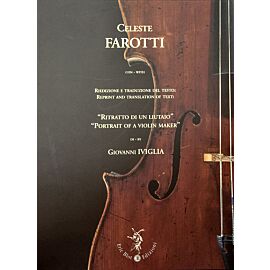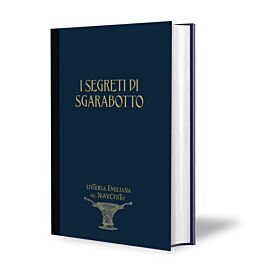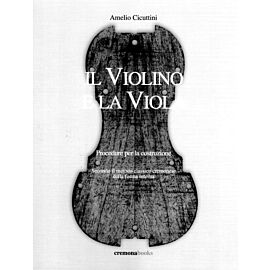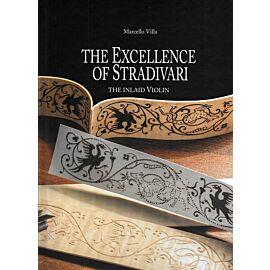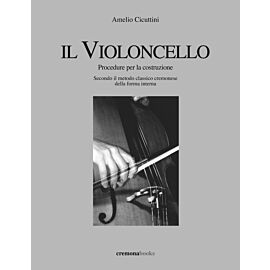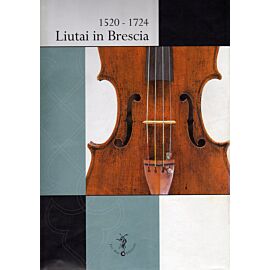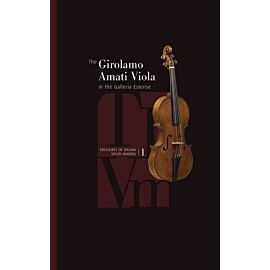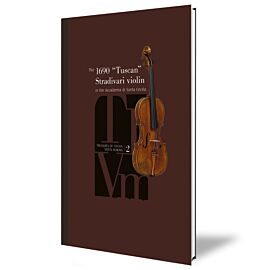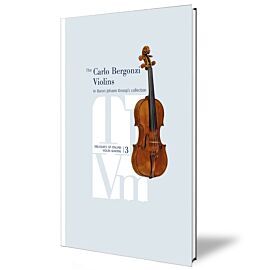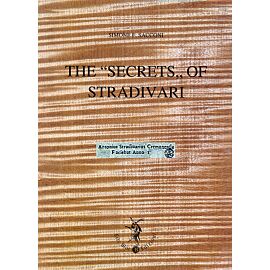€140.00
Out of stock
59 Italian Luthiers Tell Their Story Through the Answers to the 1936 Renzo Bacchetta Survey - Full Transcription
Author publisher: Luca Bastiani Liutaio
Author publisher: Luca Bastiani Liutaio
- Historical introduction
- Complete transcriptions of the surveys
- Complete translations of the surveys in English
- 43 labels conserved in the Fondo Renzo Bacchetta
- 59 pages of photographic details of the original documents showing the handwriting and signature of the maker
- Hard cover, 238 pages.
Details
1936 RENZO BACCHETTA SURVEY
In 1937 celebrations for the Bicentenary of Stradivari's death were held in Cremona. As part of these celebrations a national violin making competition and exhibition of antique lutherie took place at Palazzo Cittanova.
Coinciding with this event, in 1936 professor Renzo Bacchetta sent his multiple-question survey to every active violin maker in Italy. Among the archives in the State Library of Cremona, the section entitled “Fondo Renzo Bacchetta” contains fifty-nine completed surveys. Some were accompanied by photographs of the violin makers and their instruments, and some with letters of response. There are also a further nine letters written by makers who replied to the questions in a more epistolary form.
It is conceivable that the purpose of this survey was to act as a census, to analyse the working situation of violin makers in Italy at the time.
The survey starts by requesting the basic biographical information of the maker: name and surname, mother and father's names, place and date of birth, and current residence. It then goes on to ask after the maker's training: where and at what age they started their craft, if they learned under a master or were self-taught, if they worked as an employee or were self-employed, and if they had previously held any other occupation. This group of ques-tions is particularly important as it precisely defines each maker's formative path, giving us some insight into their initial approach to the craft.
The following questions are of a more technical nature: how many instruments the maker had completed, the type of wood they used, the type of varnish, how many pieces of wood go into the making of their instruments, and their preferred model. These questions bring to light precious stylistic aspects useful for identifying the technique and taste of each maker, recognisable in their instruments that still remain with us today. These are very effective elements to use to identify the origins of an instrument. This is, of course, information that should be correlated with already existing literature and other proven elements with re-gards to these makers. The fact, however, that the responses are true, handwritten, signed self-certifications gives significant historical value to the survey.
The concluding part of the survey was used by Bacchetta to understand if the makers had direct contact with antique instruments, if they had ever restored them, if they were in possession of any, and if they sold them.
With these final questions, Bacchetta's clear interest in antique instruments, and their whereabouts within Italy, becomes evident.
In 1937 celebrations for the Bicentenary of Stradivari's death were held in Cremona. As part of these celebrations a national violin making competition and exhibition of antique lutherie took place at Palazzo Cittanova.
Coinciding with this event, in 1936 professor Renzo Bacchetta sent his multiple-question survey to every active violin maker in Italy. Among the archives in the State Library of Cremona, the section entitled “Fondo Renzo Bacchetta” contains fifty-nine completed surveys. Some were accompanied by photographs of the violin makers and their instruments, and some with letters of response. There are also a further nine letters written by makers who replied to the questions in a more epistolary form.
It is conceivable that the purpose of this survey was to act as a census, to analyse the working situation of violin makers in Italy at the time.
The survey starts by requesting the basic biographical information of the maker: name and surname, mother and father's names, place and date of birth, and current residence. It then goes on to ask after the maker's training: where and at what age they started their craft, if they learned under a master or were self-taught, if they worked as an employee or were self-employed, and if they had previously held any other occupation. This group of ques-tions is particularly important as it precisely defines each maker's formative path, giving us some insight into their initial approach to the craft.
The following questions are of a more technical nature: how many instruments the maker had completed, the type of wood they used, the type of varnish, how many pieces of wood go into the making of their instruments, and their preferred model. These questions bring to light precious stylistic aspects useful for identifying the technique and taste of each maker, recognisable in their instruments that still remain with us today. These are very effective elements to use to identify the origins of an instrument. This is, of course, information that should be correlated with already existing literature and other proven elements with re-gards to these makers. The fact, however, that the responses are true, handwritten, signed self-certifications gives significant historical value to the survey.
The concluding part of the survey was used by Bacchetta to understand if the makers had direct contact with antique instruments, if they had ever restored them, if they were in possession of any, and if they sold them.
With these final questions, Bacchetta's clear interest in antique instruments, and their whereabouts within Italy, becomes evident.



